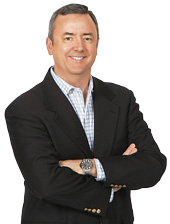“We Learned How to Listen Better”
As Kimberly-Clark began down the path toward sustainability, it was confronted with layers of miscommunication between itself and environmental activists. Tom Falk, chairman and CEO of Kimberly-Clark, says that all that began to change as the company got better at listening.
Topics
Leading Sustainable Organizations
Tom Falk is basically a lifer at Kimberly-Clark, the global manufacturer of essential consumer products. He’s been with Kimberly-Clark for 29 years and was named CEO in 2002 and chairman in 2003.
Sustainability has become as interwoven into the company’s culture as safety, says Falk. “We have to operate with the same set of safety rules everywhere, and we have the same set of environmental rules and standards everywhere,” he says. The company is widely acknowledged to be a leading global manufacturer in terms of quality, efficiency and sustainability. The U.S. Environmental Protection Agency, for instance, gave Kimberly-Clark its ENERGY STAR Partner of the Year award for two years in a row for the company’s comprehensive approach to energy management.
Kimberly-Clark issues an annual sustainability report, and an interactive feature allows anyone to build a customized version of the report. According to its 2011 report, by the end of 2011 the company was sourcing 99.9 percent of its fiber from certified suppliers, was down to 21 percent of its waste sent to landfills (the goal is to reach zero waste by 2015) and was getting 13% of its net sales from environmentally innovative products. The company details its sustainability efforts and progress at its website.
In a conversation with MIT Sloan Management Review’s David Kiron, Falk talks about the company’s initial resistance to its own outside sustainability advisory board, how it learned to have constructive conversations with stakeholders who push for the company to act faster and Kimberly-Clark’s own shift toward “raising our gaze to a more aggressive set of goals.”
Over the past 10 years, what have been the big inflection points in your sustainability agenda?
The place to start is really in the mid ‘90s, when I first got involved in sustainability. That coincided with the Scott merger, which is when we became a much bigger tissue company.
At that point we set a series of five-year goals. We wanted to look out far enough, have some stretch objectives, set goals and then measure them in each of our facilities around the world every quarter. We said, “Let’s start with some obvious things for our business like water consumption, making sure we’re reducing our solid waste in the landfill, air emissions and energy consumption per unit of output. Let’s agree on measurements.





